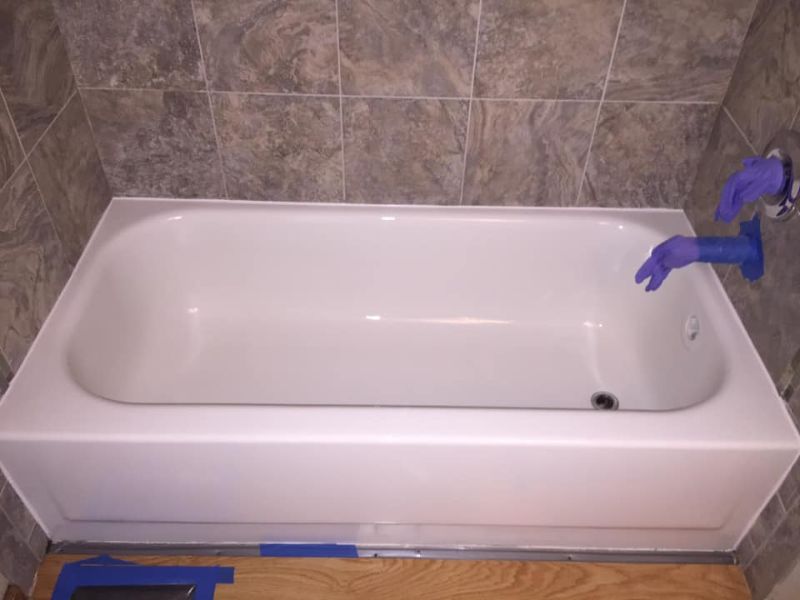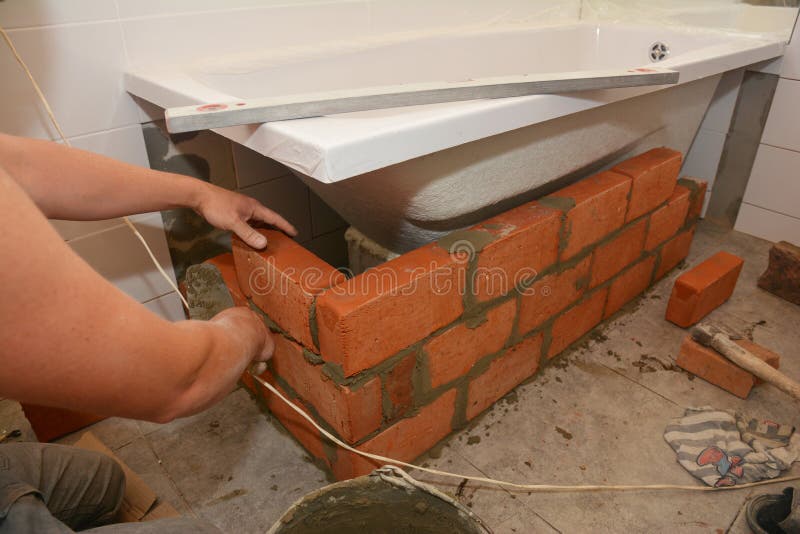Plumbing Basics: The First Step for Bathtub Installation
Plumbing Basics: The First Step for Bathtub Installation
Blog Article
In this article down the page you will discover lots of wonderful content related to A Step-by-Step Guide to Installing a Bathtub.

Setting up a bathtub isn't exactly brain surgery, however it does call for solid plumbing, woodworking, and often, tiling abilities. Replacing an old bathtub with a brand-new one is additionally a moderately hard project. If the old bathtub is conveniently easily accessible, the task can relocate rapidly; if you need to open up a wall to remove the old tub and also position the new bath tub, the job is much harder. In either case, the task is within a residence handyman's skills, although you will need an assistant to leave the old tub and also set in the brand-new one. Make certain you have qualified on your own for the work and are comfortable attempting it. Instead of working with a contractor to take control of a halfway-completed project, it is far better to think about utilizing one prior to you begin. Possibilities are you might need an expert plumber to make tube connections.
This write-up will certainly assist you set up a brand-new bath tub in your washroom if you have actually already gotten a brand-new tub and do not need to transform the plan of your previous water system pipes.
Your tools and product checklist need to consist of the following:
Preparing for the Installment
To start with, the sustaining structure supplied with the bathroom needs to be fitted (if called for) according to the maker's directions. Next off, fit the faucets or mixer to the bath tub. When suitable the tap block, it is very important to make certain that if the tap features a plastic washing machine, it is fitted between the bathroom and also the taps. On a plastic bath, it is additionally practical to fit a sustaining plate under the faucets system to stop pressure on the bath tub.
Fit the flexible tap ports to the bottom of the two taps using 2 nuts as well as olives (often provided with the tub). Fit the plug-hole outlet by smearing mastic filler round the sink electrical outlet opening, and after that pass the outlet with the hole in the bath. Use the nut provided by the supplier to fit the plug-hole. Check out the plug-hole electrical outlet for an inlet on the side for the overflow pipe.
Next off, fit the end of the adaptable overflow pipe to the overflow electrical outlet. Afterwards, screw the pipe to the overflow face which need to be fitted inside the bath. See to it you use every one of the provided washers.
Link the catch to the bottom of the waste electrical outlet on the bath tub by winding the thread of the waste outlet with silicone mastic or PTFE tape, and also screw on the catch to the electrical outlet. Link all-time low of the overflow tube in a similar manner.The bathroom need to currently prepare to be fitted in its final position.
Removing Old Taps
If you need to change old faucets with new ones as a part of your installment, after that the first thing you must do is detach the water system. After doing so, turn on the taps to drain pipes any water remaining in the system. The procedure of removing the existing taps can be rather troublesome due to the restricted gain access to that is usually the instance.
Utilize a container wrench (crowsfoot spanner) or a tap tool to reverse the nut that links the supply pipes to the taps. Have a cloth all set for the staying water that will originate from the pipes. As soon as the supply pipes have actually been eliminated, make use of the exact same tool to loosen up the nut that holds the taps onto the bath/basin. You will certainly require to stop the solitary taps from turning throughout this process. As soon as the taps have been gotten rid of, the holes in the bath/basin will certainly need to be cleaned of any type of old securing substance.
Before going on to fit the new taps, compare the pipe connections on the old taps to the new faucets. If the old faucets are longer than the brand-new faucets, then a shank adapter is required for the new taps to fit.
Setting up the Tub
Utilizing the two wooden boards under its feet, place the bathtub in the required setting. The wooden boards are valuable in uniformly spreading the weight of the bathtub over the location of the boards instead of concentrating all the weight onto 4 tiny factors.
The next goal is to guarantee that the bathtub is leveled all round. This can be accomplished by examining the spirit level and readjusting the feet on the tub until the level checks out degree.
To set up taps, fit all-time low of the furthest adaptable tap connector to the ideal supply pipe by making a compression join; after that do the same for the various other tap.
Turn on the supply of water and also check all joints and also brand-new pipework for leaks and also tighten them if necessary. Fill up the bath tub and additionally check the overflow outlet as well as the regular electrical outlet for leakages.
Finally, repair the bathroom paneling as defined in the manufacturer's instruction manual. Tiling as well as securing around the bathtub ought to wait up until the bath tub has been utilized a minimum of when as this will certainly resolve it right into its last position.
Suitable New Taps
If the tails of the brand-new taps are plastic, after that you will certainly need a plastic port to avoid damages to the string. One end of the adapter fits on the plastic tail of the tap and the other end provides a connection to the existing supply pipes.
If you need to fit a monobloc, then you will certainly need minimizing couplers, which links the 10mm pipe of the monobloc to the conventional 15mm supply pipe.
Next, position the faucet in the placing hole in the bath/basin making sure that the washers remain in location in between the faucet as well as the sink. Secure the faucet in place with the manufacturer supplied backnut. Once the faucet is securely in position, the supply pipes can be attached to the tails of the taps. The faucets can either be connected by using corrugated copper piping or with regular tap adapters. The former type ought to be attached to the tap ends initially, tightening just by hand. The supply pipelines can later be linked to the various other end. Tighten both ends with a spanner after both ends have actually been connected.
Tiling Around the Tub
In the location where the bathroom meets the ceramic tile, it is essential to seal the joins with a silicone rubber caulking. This is necessary as the installation can move enough to split a stiff seal, creating the water to pass through the wall between the bath and the tiling, resulting in problems with moisture as well as feasible leaks to the ceiling listed below.
You can choose from a range of coloured sealers to blend in your fixtures and fittings. They are marketed in tubes and also cartridges, as well as are capable of securing spaces as much as a width of 3mm (1/8 inch). If you have a bigger space to fill, you can load it with twists of drenched paper or soft rope. Remember to always load the tub with water before securing, to enable the activity experienced when the tub remains in use. The sealant can break rather early if you do not take into account this motion prior to sealing.
Conversely, ceramic coving or quadrant tiles can be utilized to border the bath or shower tray. Plastic strips of coving, which are easy to use and also cut to size, are likewise conveniently available on the market. It is a good idea to fit the floor tiles using water-resistant or water-proof sticky and also cement.
Bathtub Installation
How Important Is A Bathtub To Your Home?
High-quality baths, showers, and other bathroom updates are necessary when considering a smart investment in your home. It’s a room that you go to every day and one that is constantly being used by guests.The bathroom is one of the top trafficked rooms in a home and also one of the most valuable in terms of home resale.
Install Piping Before Tub
You will be using your existing drain and waste vent system, but pipes required include the hot and cold water supply lines and a pipe leading to a shower head. A mixing valve and shower head are also needed. Air chambers may be required.
Position the Tub
Lower the tub into place so that the continuous flange fits against the wall studs and rests on 1’x4' or 2’x4' supports. Anchor the tub to the enclosure with nails or screws inserted through the flanges into the studs.
NOTE: Remember, bathtubs and shower stalls may require support framing. A bathtub filled with water is extremely heavy, so check building codes and framing support before installing the tub.
Assemble Drain Connections
Assemble the bathtub drain connections by connecting the tub overflow with the tub drain above the trap, not beyond it. The trap will have a compression fitting that screws over the arm of the overflow assembly.
Place a Pipe For the Shower Head
First, locate a brass female threaded winged fitting and attach it to a framing support via a screw or a nail. Then run a pipe up the wall for the shower head. Sweat or solder the other side of the brass fitting to the top of the pipe.
Attaching Hot and Cold Water Lines
Attach your water lines for both hot and cold by sweating these directly into the hot and cold ports of the mixing valve. The mixing valve will be how water enters the tub’s system, not by the pipes themselves.
Install the Spout
Extend a piece of 1/2 inch pipe, or whichever length is specified in the manufacturer’s instructions, for the tub spout. Sweat on a male threaded fitting at the end of the pipe or use a brass nipple of the proper length and a 1/2 inch cap.
NOTE: At this point you should have your rough-in plumbing work inspected before proceeding further.
Check For Leaks
Restore the water pressure and check the drain connection and the supply pipes for any sign of leaking.
estore the Bathroom Wall
Replace the wall with moisture-resistant drywall as a base for your wall covering. Seal the joints between the wall and your new tub with silicone caulk as protection against water seepage.
https://www.berkeys.com/2016/12/02/bathtub-installation-dallas/

I'm very inquisitive about Tools You Need to Install a New Bathtub and I really hope you enjoyed my entry. Sharing is caring. Helping others is fun. Kudos for your time. Visit again soon.
Apply Now Report this page